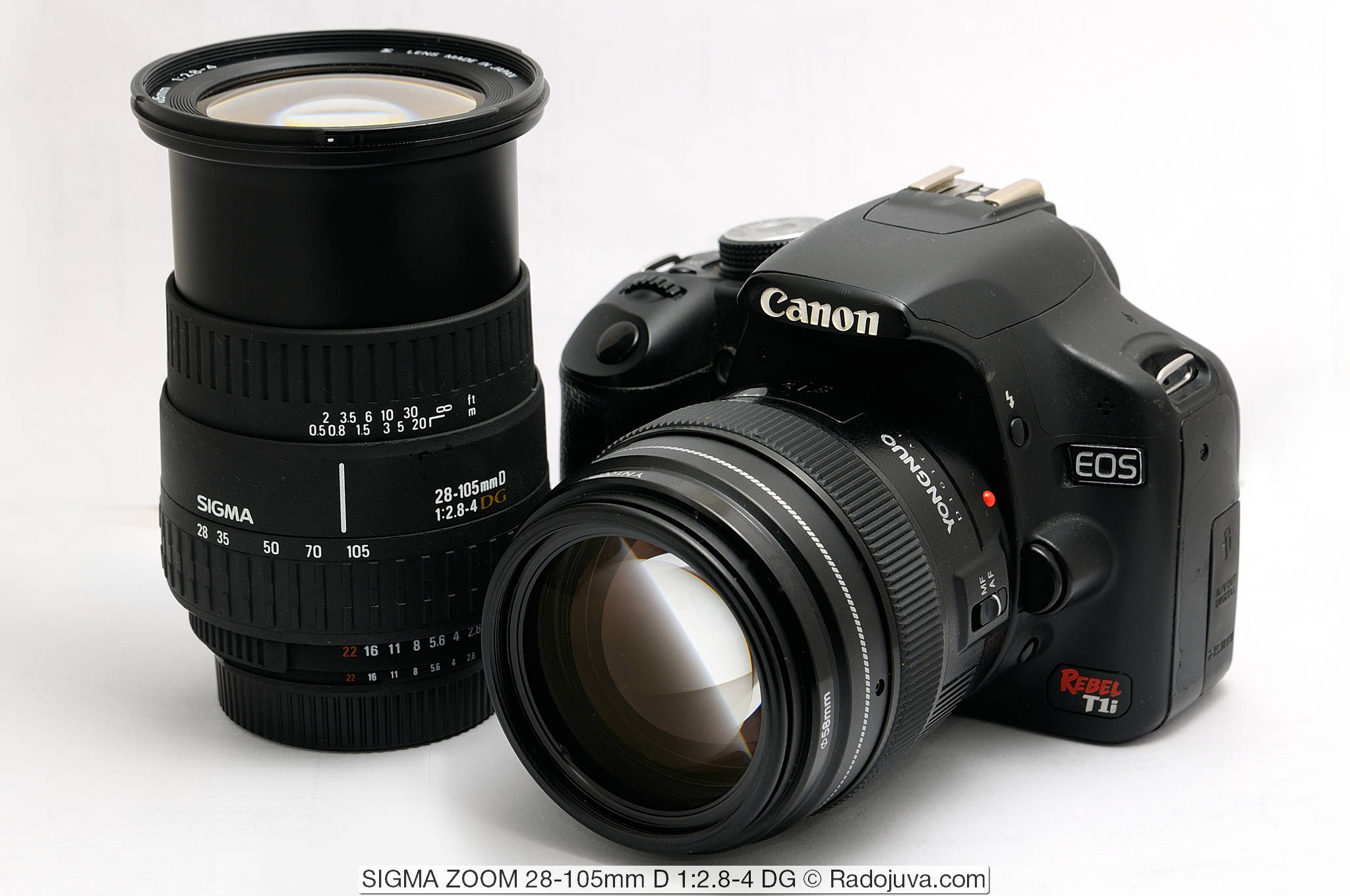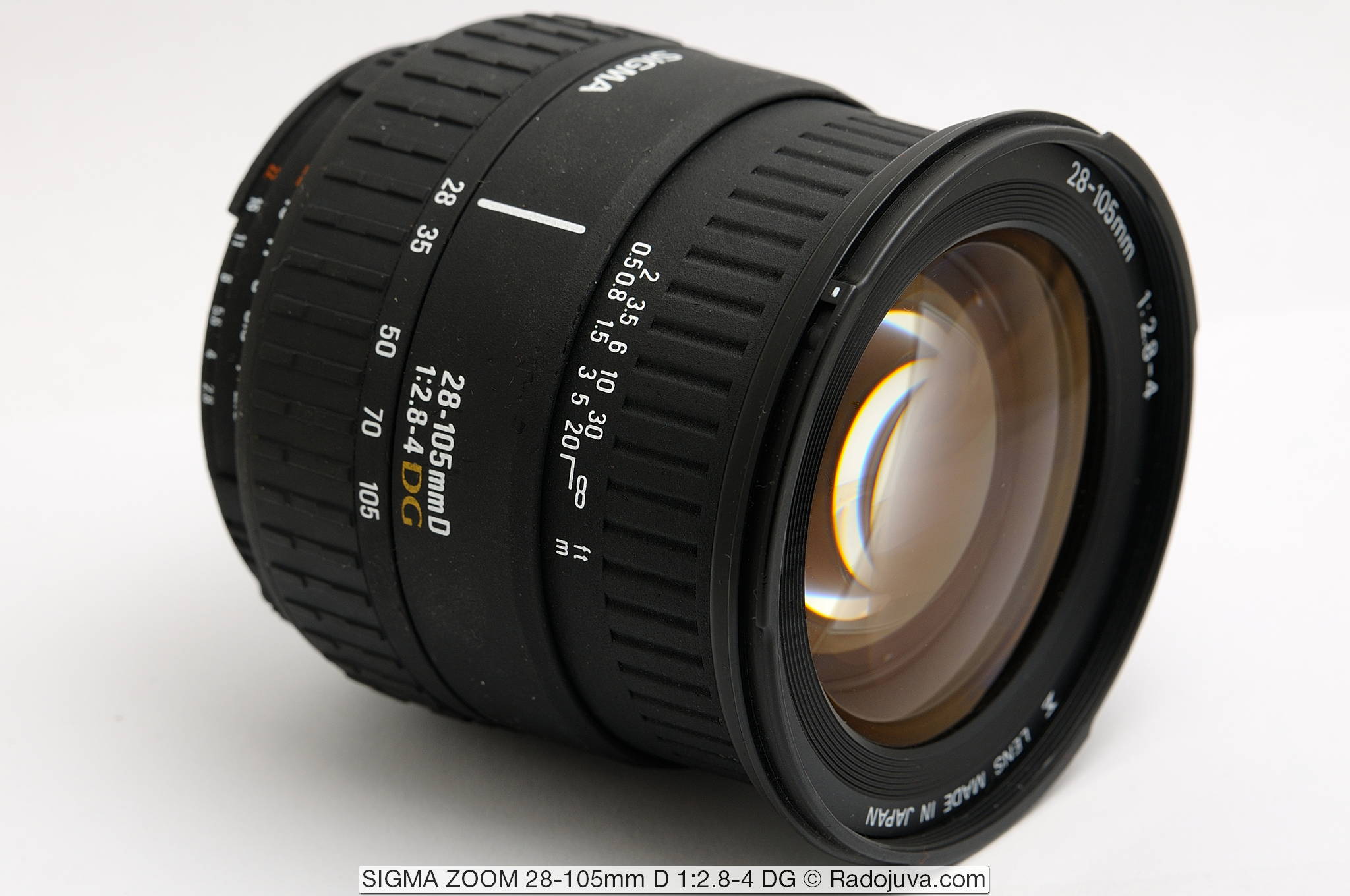According provided by lens SIGMA ZOOM 28-105mm D 1: 2.8-4 DG (version for Nikon cameras) huge thanks to the store www.fotika.com.uawhere you can find a huge number of different used photographic equipment, including similar lenses for Nikon cameras.
In the review, I already had a similar lens - SIGMA ZOOM 28-105mm D 1: 2.8-4 Asphericalmost likely SIGMA ZOOM 28-105mm D 1: 2.8-4 DG (from this review) is its update, although the new model does not include the 'Aspherical' prefix in its name.
The main differences between SIGMA ZOOM 28-105mm D 1: 2.8-4 Aspherical and SIGMA ZOOM 28-105mm D 1: 2.8-4 DG:
- Version aspherical not optimized for digital cameras. DG version is optimized. This primarily concerns the enlightenment of optics. Unfortunately, the DG version is still a little yellow.
- Lenses have different names SIGMA ZOOM 28-105mm D 1: 2.8-4 aspherical and SIGMA ZOOM 28-105mm D 1: 2.8-4 DG.
- The DG version is newer.
- The DG version has a classic Sigma velvet finish on its case.
- Perhaps there are other differences that I have not found.
List of all Nikon FX 28-XXX autofocus lenses:
- Nikon 28-70 mm 1: 2.8D AF-S Nikkor ED SWM (black / white)
- Nikon 28-70 mm 1: 3.5-4.5 AF Nikkor (MKI)
- Nikon 28-70 mm 1: 3.5-4.5D AF Nikkor (MKII)
- Nikon 28-80 mm 1: 3.5-5.6D AF Nikkor (MKI)
- Nikon 28-80 mm 1: 3.5-5.6D AF Nikkor (MKII)
- Nikon 28-80 mm 1: 3.3-5.6G AF Nikkor (MKIII, black / silver)
- Nikon 28-85 mm 1: 3.5-4.5 AF Nikkor (MKI)
- Nikon 28-85 mm 1: 3.5-4.5 AF Nikkor (MKII)
- Nikon 28-100 mm 1: 3.5-5.6G AF Nikkor (black / silver)
- Nikon 28-105 mm 1: 3.5-4.5D AF Nikkor (Japan / China)
- Nikon 28-200 mm 1: 3.5-5.6D AF Nikkor (Japan / China, Black / Silver)
- Nikon 28-200 mm 1: 3.5-5.6G ED IF Aspherical AF Nikkor (Japan / Thailand)
- Nikon 28-300 mm 1: 3.5-5.6G AF-S Nikkor ED SWM VR IF Aspherical
The catalog of modern universal lenses for Nikon can be see here.
The photos in the gallery below are shown without additional processing, the conversion of the source RAW files by the original Nikon ViewNX-i utility without any additional adjustments.
Download source files in format JPEG can at this link (38 files in the '.JPG' format, 350 MB, there are a couple of portraits).

SIGMA ZOOM 28-105mm D 1: 2.8-4 DG and Canon 500D + Yongnuo 100mm f / 2.0
Comments on this post do not require registration. Anyone can leave a comment. Many different photographic equipment can be found on AliExpress.
Material prepared Arkady Shapoval. Training/Consultations | Youtube | Facebook | Instagram | Twitter | Telegram
















Is the "total" for this lens the same as for its previous version?
“But price pegs aside, the SIGMA 28-105 / 2.8-4 is a pretty mediocre lens.”
According to the pictures - like better than the previous version.
Reply
Although NOT - alas, even f / 10, f / 11 are soapy.
If not for the soap picture is nice, IMHO.
Reply
There is only one question (for my development): what is the process of optimizing the lens for digital cameras?
Reply
I’ll clarify the question: in addition to improving the optical properties of the lens, allowing to increase its resolution.
Reply
And also compatibility with digital cameras, in the first place, since otherwise many third-party lenses simply refuse to work with modern cameras, or give various errors. That is, optimization probably first of all means checking compatibility and bug-freeness with digital cameras, as well as the correct operation of autofocus, in the first place. Some of the optical properties are likely to be improved or changed as well….
Reply
I put it in the wrong place :). once again .. Partially understood the meaning of what you wrote. I will say this: optimization and compatibility are two different things. My question was about optimization. Those. “The lens is optimized for digital cameras” - I would like to hear what is not optimized in the aspherical version, or, conversely, what is optimized in this version, except for “primarily enlightenment of the optics” (that is, what is optimized in the second, third, etc. n turn?)
Reply
There really is something.
For example, Bokina 90 / 2.5 is not optimized for digital cameras: the film (emulsion) has a matte surface, because on film cameras the lens does not give a glare from an almost plane-parallel rear lens. And on digital cameras appears in difficult lighting conditions, a flare spot of blue for the whole frame.
One more example. Film emulsion is homogeneous and thin. A matrix is a matrix. It contains microlenses and protective glass + IR / UV filter. Those. mtaritsa is never homogeneous.
This must be taken into account when developing a lens for digital cameras: the angle of incidence of the rays may be acceptable for the film, but unsuitable for the digital matrix.
This is most pronounced with Jupiter-12 lenses with a very, very short rear focal length: on a film camera, the lens shows itself much better than on a digital one; because on a digital camera, because of the large angle of incidence, a color shift occurs - the so-called color shift, which sharply spoils the picture.
Reply
Thank you very much, Rodion
Reply
Are there any factors, in your opinion, that make lenses created for digital cameras less suitable for film?
Reply
I do not know. In theory, the matrix is an add-on. a condition stricter than film. Therefore, back - from numbers to film - everything should fit.
Reply
the author himself did not understand what he blurted out ...
Reply
This is where people meditate on film resolution http://forum.ixbt.com/topic.cgi?id=20:3591 . And so, of course, yes, this is all my literacy :)
Reply
Here, the author will say, damn it, SV hooked like a bath sheet :)
Reply
Partially understood the meaning of what you wrote. I will say this: optimization and compatibility are two different things. My question was about optimization. Those. “The lens is optimized for digital cameras” - I would like to hear what exactly is not optimized in the aspherical version, or, conversely, what is optimized in this version, except “first of all, the optical enlightenment” (that is, what is optimized in the second, third, etc.) n. queue?)
Reply
Well no ..
Without chapter "Results"
The review is, as it were, incomplete.
Arkady, you are a professional, you held the lens in your hands, worked with him
and it’s very important for readers to know your resume.
Reply
https://radojuva.com/2015/03/sigma-28-105-d-2-8-4-aspherical/
Reply
In general, by definition, all assessments are subjective and relative. It makes sense to compare other things being equal (for example, with the same price tag). On the other hand, what's the use of enjoying mediocre quality, even for 3 rubles? Therefore, it is easier and more correct to talk about whether a lens (camera, etc.) is suitable for solving certain problems or not. In Arkady periodically in his reviews, this is precisely the formulation he comes across: “suitable for solving most problems”. Not a word about this in this review.
Reply
Sometimes a plug for 3 rubles can save. Photos from this lens do not look bad. In general, it is difficult to imagine a frankly bad lens of this class.
Reply
So that's what we're talking about (I'm talking about a plug for 3 rubles and the tasks to be solved). And the photos are really good ... And the sharpness is not bad. And so, if you have money, you shouldn't feel sorry for it, take the best that you can afford ...
Reply
A very rare lens. I did not expect to see him in testing.
Reply